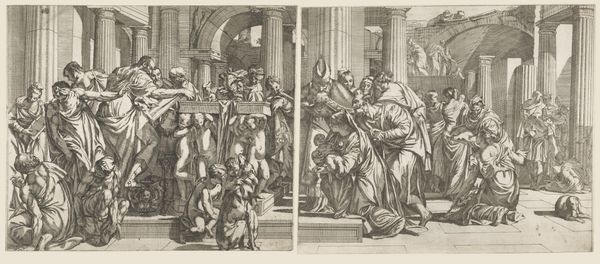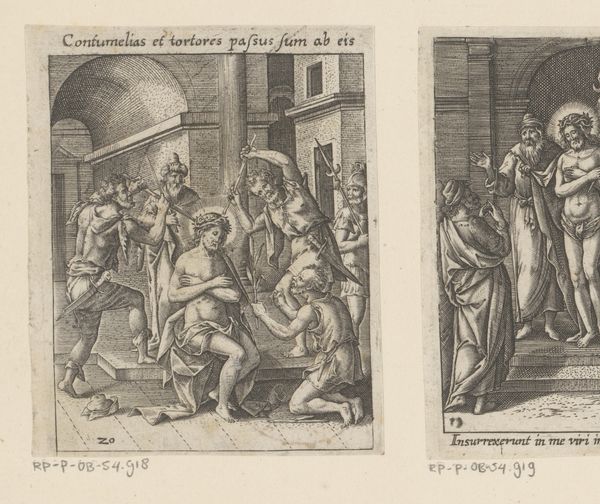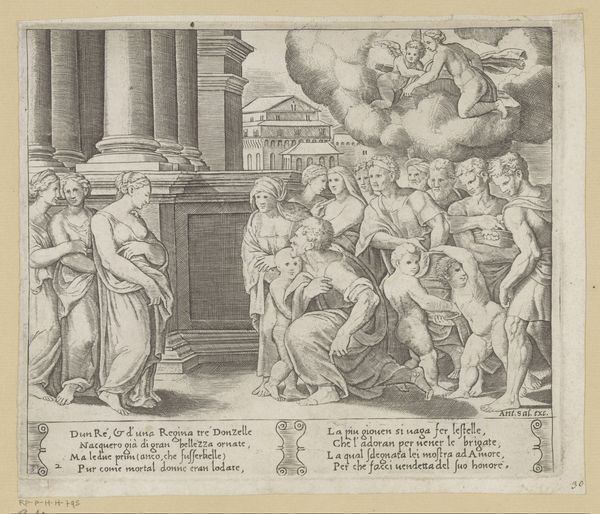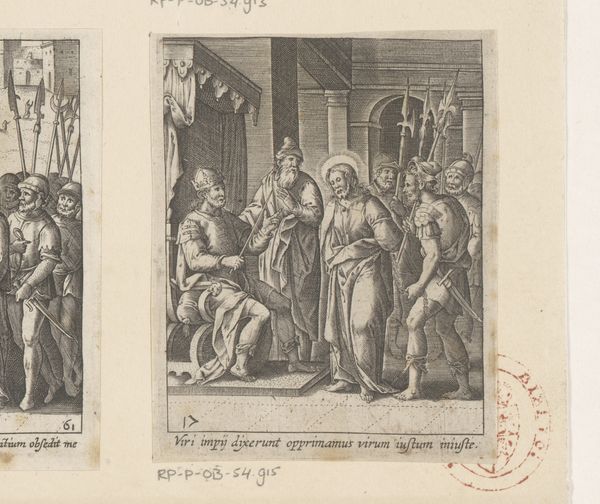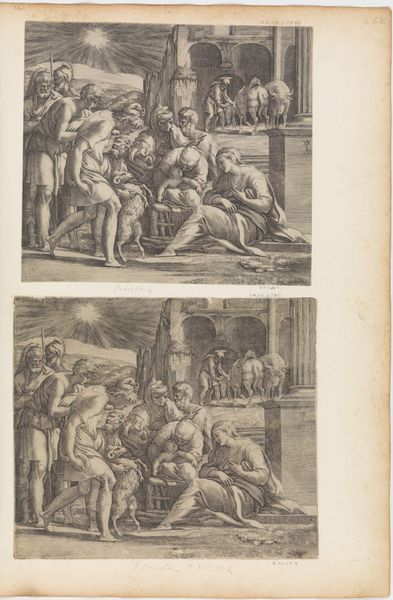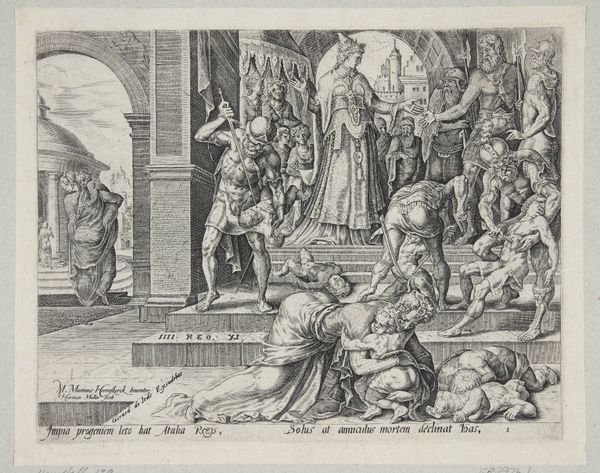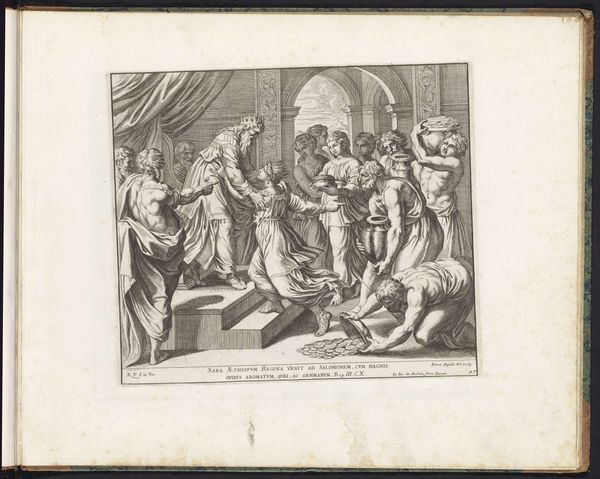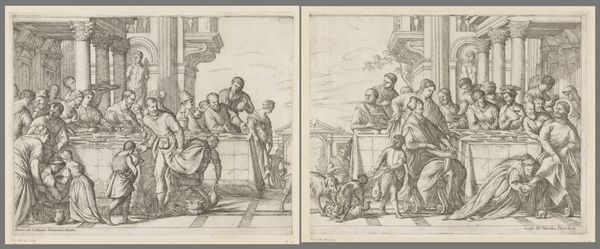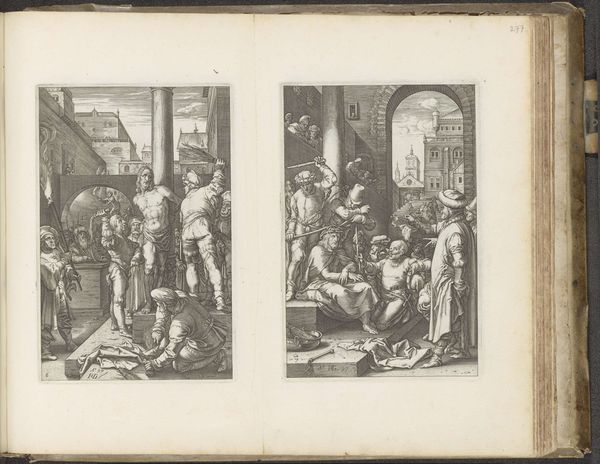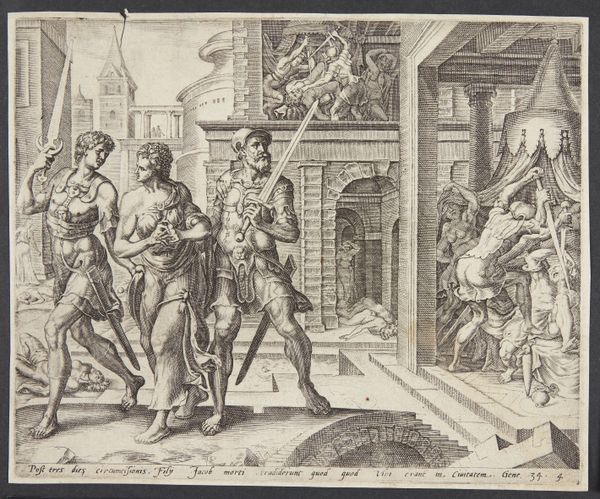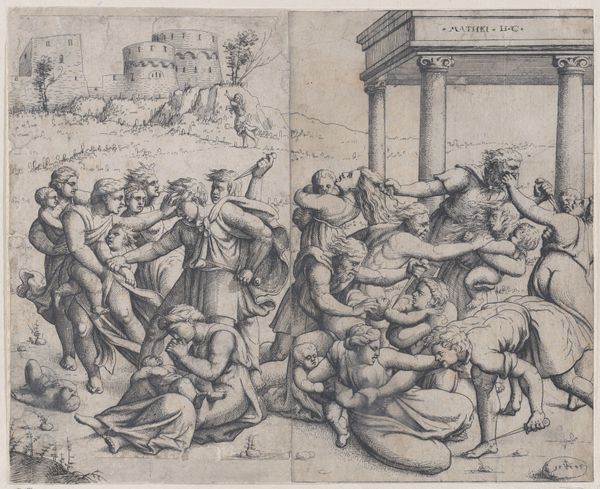
print, engraving
#
narrative-art
# print
#
figuration
#
11_renaissance
#
history-painting
#
engraving
Dimensions: height 89 mm, width 70 mm
Copyright: Rijks Museum: Open Domain
Editor: So, here we have "Pilatus wast zijn handen in onschuld," an engraving from between 1582 and 1671, housed at the Rijksmuseum. Looking at it, the detail is really striking for a print. There's this real sense of drama, particularly in Pilate's gesture. What stands out to you in this piece? Curator: The act of washing hands itself is loaded with meaning. It's more than just a physical action; it's a theatrical display, a symbolic attempt to cleanse oneself of responsibility, in this case, the condemnation of Christ. Consider how this image resonates through centuries – how often do we see the "washing of hands" used metaphorically to describe leaders avoiding accountability? Editor: That's a good point. So you're saying the artist uses this very specific moment to communicate a broader message about responsibility? Curator: Exactly. Think about the visual language – Pilate is seated above, almost detached, while Christ is presented as vulnerable, innocent. The surrounding figures, the architectural elements… they all contribute to the story, layering the symbolism. The composition reinforces the core theme: the powerful washing away their guilt. The scene next to it, carrying the cross, illustrates his fate despite Pilate's performance. What impact does that contrast have? Editor: I guess it shows the futility of Pilate's act. The scene is already in motion; he can’t stop what’s about to happen no matter what gesture he performs. It’s really quite powerful, almost like a visual indictment of inaction disguised as action. Curator: Precisely. These enduring symbols speak volumes about human nature, the complexities of power, and the burdens of innocence throughout history. The piece is an astute commentary on how cultures remember events, encode their judgments in art, and how relevant those images remain. Editor: It’s amazing how much can be packed into a single image when you start to unpack the layers of symbolism. Thanks for your insights! Curator: My pleasure. I am struck by how much a relatively simple symbolic gesture can reverberate across so many centuries, carried forward through imagery.
Comments
No comments
Be the first to comment and join the conversation on the ultimate creative platform.
